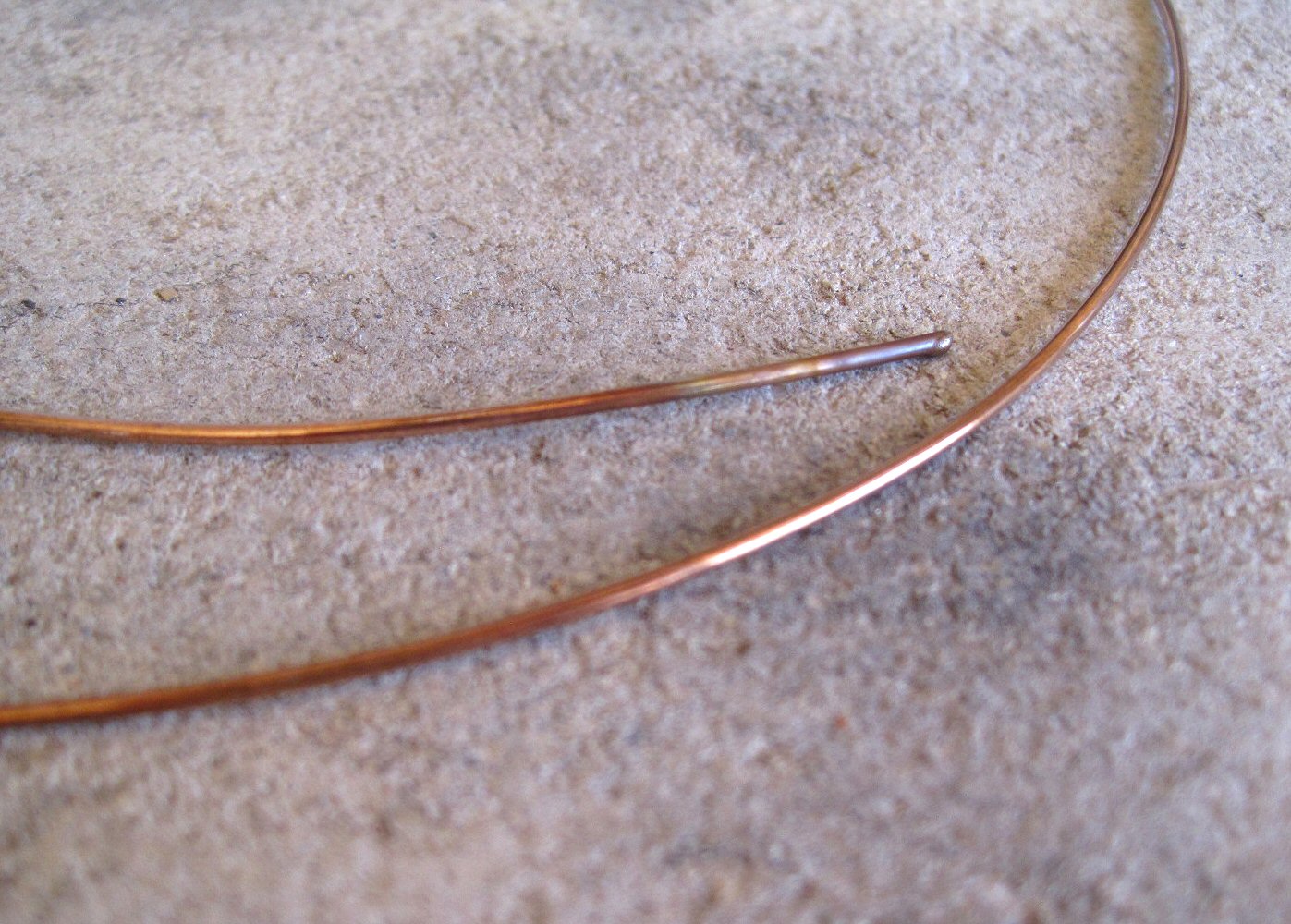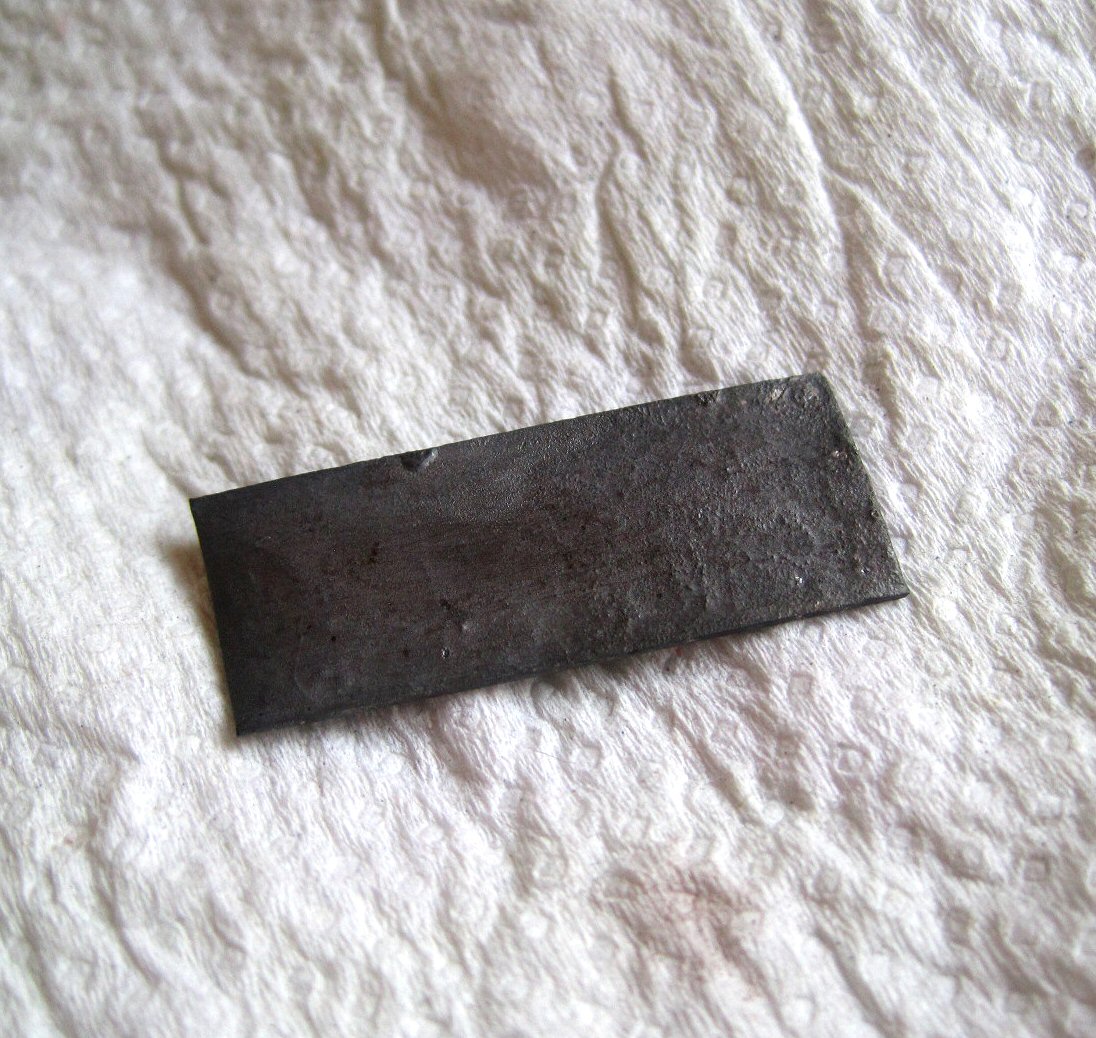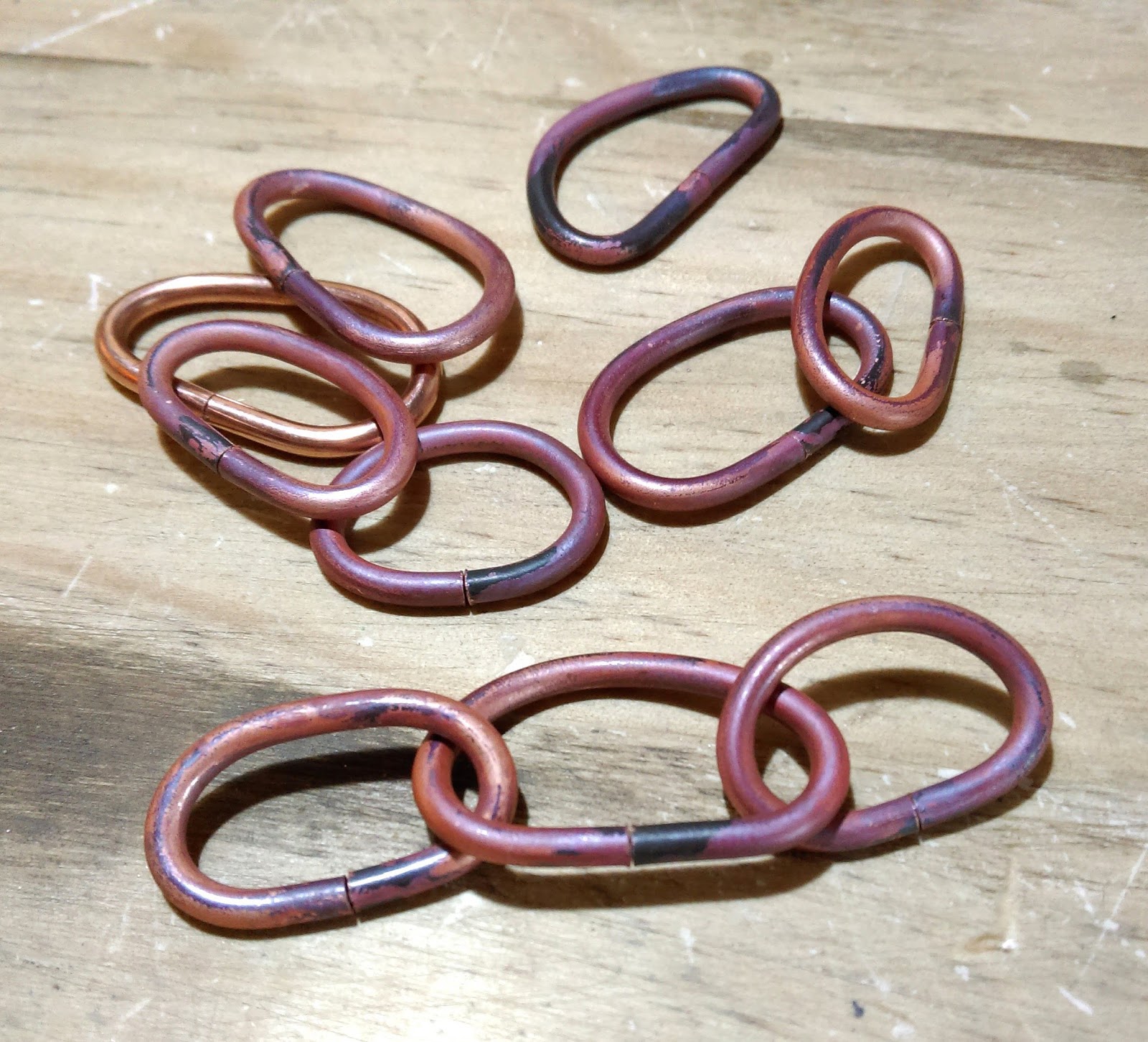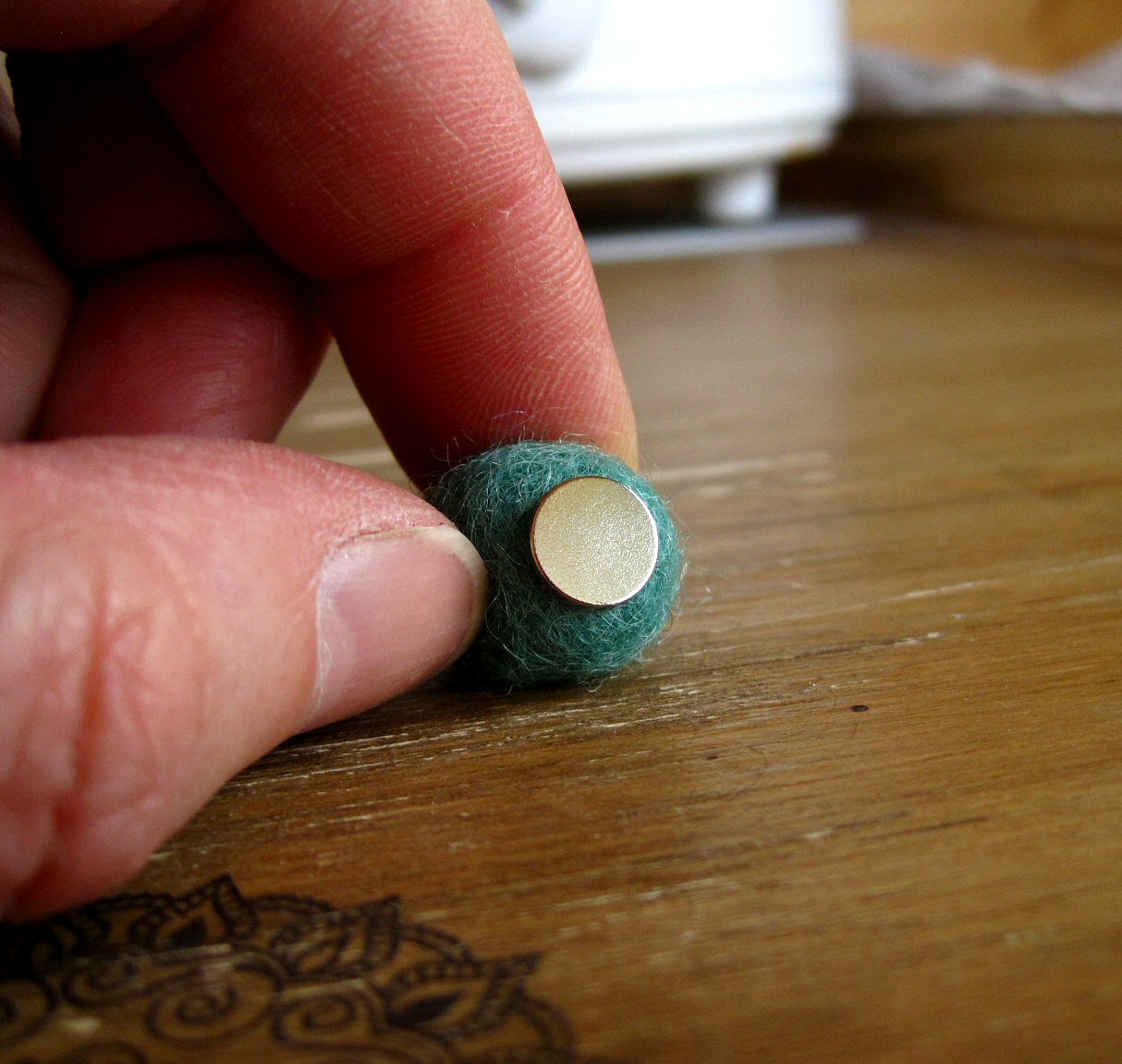I recently had a query through my website about copper wire solder asking if I could give any tips on using it. Apparently it is very hard to cut and it wasn't flowing properly when heated. I do a lot of copper soldering and as I've only read about copper paste solder and never actually tried the paste or the wire I thought it would be a good idea to get some and give it a try myself!
The copper wire solder is available on ebay and Amazon and is fairly inexpensive. I bought 2 ft of 18g {1mm} hard solder for £1.98 plus postage. It looks very much like copper wire as you can see from the photo above but it is very hard to cut. It's recommended that you use memory wire cutters to cut it but I didn't want to fork out £15 at Hobbycraft so I used the DIY store heavy duty metal snips I sometimes use to cut thicker sheet.
I could have done with Hercules himself to help me to be honest but I did manage to cut a couple of small pieces of the wire solder that immediately pinged off on their own little journey into the unknown {landing somewhere in my shed in other words}. I'd recommend cutting the solder wire inside a plastic bag so you can catch the pieces :D
So I decided not to bother cutting the solder wire and soldered a practice bangle of 2mm copper wire by just touching the end of the solder wire to the join when the copper was the right temperature.
I've never soldered this way before so did end up with a bit too much solder on the join but the wire solder flowed easily. Some websites say you don't need to use flux with the copper wire solder but I used it anyway out of habit.
This photo shows the soldered join a bit more clearly. A couple of small balls formed as I was soldering which popped to reveal a lighter colour. You can see one of them on the top to the left side where there is a slightly lighter round area.
This is the join after pickling. The colour of the solder is a pretty good match to the bright copper colour of the wire but you can see the darker spot where the ball of solder popped to the left of the join.
So being me, who doesn't like to see excess solder on joins, I decided to file the join to see "what lies beneath"...
And I was a bit disappointed to see a thin grey line appear as I filed the excess copper solder away. There are two other grey patches on the copper bangle where I haven't cleaned all of the solder off. It's such a shame the copper colour of the solder is just a thin coating on top of a dirty grey colour. It would make me worry that leaving the solder join as it was then hammering a bangle may end up with patches of grey showing through the copper coloured solder in the join area. That's an experiment for another day.
Next I experimented with the copper wire solder and how it took to being oxidized with liver of sulphur.
I flowed some of the copper wire solder onto a piece of copper then pickled it.
Pickling shows up some grey areas within the solder which made me wonder if it would oxidize ok.
After dipping in liver of sulphur.
I washed the copper first with Fairy Liquid and water and as you can see it oxidized evenly.
After cleaning up with steel wool.
The area of copper covered in the copper wire solder oxidized really well and the colour match with the bare copper after cleaning up is excellent I'd say.
So............will I change to using copper solder? At this time I don't think so. I'm a neat freak who likes to tidy up solder joins where possible as they can be a bit lumpy and spoil the look of the piece and the neat thin line of silver you get with silver solder looks infinitely better than the neat thin line of dirty grey you get with copper solder on a cleaned up join. I do think it has it's uses though - jump rings for one - as the colour match is very good as long as you don't break the surface of the solder.
I will get round to testing what happens when the solder is hammered and report back soon {ish}.
Til next time......















































